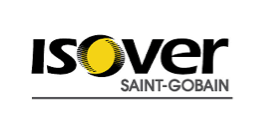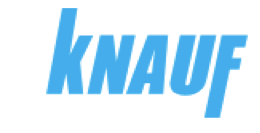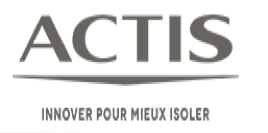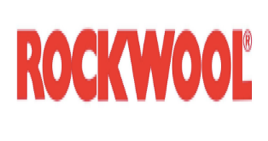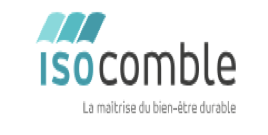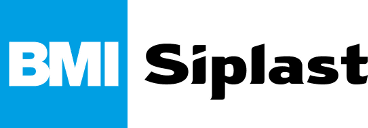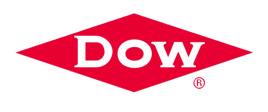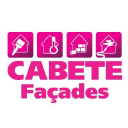Synthèse
The global insulation market, estimated at $58 billion in 2021, is set to grow steadily, with an expected annual growth rate of 6.5% between 2022 and 2030, potentially reaching $102 billion by the end of the decade. This growth is partly fuelled by the simultaneous expansion of the construction market, which is also expected to grow at an annual rate of 6.5%. Insulation demand is split relatively evenly between new construction projects (around 47% in 2020) and renovation work (around 53% in 2020), with a significant proportion of the latter being driven by incentives and incentives for new construction.a significant proportion of the latter is driven by government incentives and regulations aimed at improving the energy efficiency of buildings. In particular, the Asia-Pacific region will lead the market for insulation materials in 2021. In France, the thermal insulation market grew by 18% between 2012 and 2021, despite a decline in 2020 due to the Covid-19 crisis. The French insulation market is particularly benefiting from government incentives for renovation, and ecological and bio-sourced materials are gaining in popularity in the sector.
The main players are materials manufacturers such as Knauf and Rockwool, as well as specialist installers such as Isocomble and Isorenov. What's more, the French market is adapting to trends in housing starts, which serve as an indicator of future demand for insulation, with a rebound expected in 2021 after a previous decline in housing starts.
Dynamic trajectory of the insulation sector in the context of the housing and renovation markets
Looking at recent trends in the insulation market in the country concerned, it is clear that the sector is on a dynamic growth trajectory, driven by factors encompassing both construction and renovation activities. The market comprises a wide variety of players, from raw material suppliers to installers working directly with end-customers. Given the urgency of energy efficiency and the energy transition, insulation has become a crucial element in new construction and building renovations.
The market has seen a marked increase in demand over the years. The building insulation market grew by around 18% between the early 2010s and the early 2020s. This upward trend reflects both initiatives to boost energy efficiency in the residential sector and the prosperity of the construction industry. While the market experienced a slowdown due to the Covid-19 crisis, a rapid recovery has been observed, driven by financial incentives such as the MaPrimeRénov' initiative and an increase in the number of new housing starts. As far as household demand for renovation is concerned, public authorities seem intent on meeting the challenge posed by the millions of under-insulated homes. Renovation projects are aimed not only at reducing the environmental impact, but also at improving the profitability for homeowners in terms of heating costs. Over a period of two to three years, more than 5 million households have undertaken renovation work, a significant percentage of which is aimed at raising their energy class. Public buildings and commercial property, including offices and catering facilities in need of energy renovation, present many opportunities for the insulation sector.
However, market optimism is tempered by challenges, such as the downward trend in housing starts, which potentially threatens demand. The number of housing starts is expected to affect insulation demand, which is generally seen within six months to two years of the start of construction. Ambitious government targets to reduce energy consumption and greenhouse gas emissions in the building sector have catalyzed demand for insulation. Interventions such as financial assistance programs and strict regulations on insulation standards for new homes are supporting market demand. On the other hand, the potential increase in taxes on renovation work, which could affect maintenance and improvement activities, is a risk factor likely to slow market dynamics.
If we look at the segmentation of the insulation market, we see that construction and renovation projects are roughly evenly distributed. Insulation distribution leans significantly towards attics and roofs, followed by interior and exterior walls. It's important to note that the market size indicators are taken from the study "Insulation Titans and Innovative Challengers: A spotlight on market leaders and niche players in the insulation industry."
Navigating the sprawling landscape of the insulation market, one encounters both titans whose names evoke dominance and innovators who blaze new trails with their specialized services.
When it comes to manufacturing insulation materials, the market benefits from the presence of international giants such as Saint-Gobain and Knauf. Not only are these companies omnipresent in multiple insulation material segments, they also dwarf much of the competition thanks to their size and extensive product ranges.
While these giants meet a wide range of insulation needs with their range of solutions, other market players have carved out distinct niches for themselves through strategic specialization.
- Isocomble, a Group subsidiary, has decided to focus on blow-in attic insulation. Its meticulous attention to this field has earned it a reputation for expertise, leading it to expand its presence with some forty branches across the country, most of which operate on the franchise model.
In the same vein of market ingenuity, we find brands that prefer the concession model to the franchise model.
- Tryba, a leading French brand in the distribution of insulating windows and doors, has adopted this approach. This model has enabled it to cultivate a substantial network of over 300 dealers. By providing each dealer with an exclusive territorial operating area, without training or know-how transfer, Tryba has successfully expanded its business while maintaining quality control and brand reputation.
These key players, with their varied approaches to market domination and niche specialization, form the backbone of a mature yet dynamic industry. Saint-Gobain and Knauf provide the backbone of the insulation fabric, offering solutions for almost any construction or renovation scenario. For their part, Isocomble and Tryba provide finer details, responding to specific customer needs with tailor-made services and products. Together, they illustrate the competitive and diversified nature of the insulation market, highlighting the multiple avenues open to companies wishing to establish their position in this sector.
à la compréhension de ce marché
Détail du contenu
 Informations
Informations
- Nombre de pages : 30 pages
- Format : Version digitale et PDF
- Dernière mise à jour : 27/11/2023
 Sommaire et extraits
Sommaire et extraits
1 Market overview
1.1 Definition and scope of study
Insulation is a set of techniques with a dual purpose:
- Acousticallyprotect the interior of the home from outside influences;
- Toconserve heat and improve the interior's thermal energy balance;
The market can be divided into two markets: insulation materials and insulation work.
The market is structured between suppliers of raw materials, manufacturers of insulating materials, specifiers, distributors and, finally, installers who work with end customers. The market is driven by new housing starts, but also by renovation. It's a dynamic market worldwide, with an average annual growth rate of 6. 5% between 2022 and 2030.
In France, the insulation market is at the heart of current concerns, as it is a pillar of the energy transition. Every year, the building sector emits over 123 million tonnes of CO2. It is therefore one of the major challenges of the coming years. In 2023, nearly 5 million homes will still be in a situation of fuel poverty.
In 2021, 45 million cubic meters of insulation were installed, a figure up on 2019 and set to continue growing in the years to come.
In recent years, government policy has offered consumers a wide range of financial incentives, including tax deductions and zero-rate eco-loans (see Regulations section). The building insulation market has been boosted by these government efforts, and in particular by the use of bio-sourced materials in a dual response to environmental challenges.
Players in this market include manufacturers of insulating materials, such as market leaders Knauf and Rockwool, as well as installers who carry out innovative insulation work in buildings and homes, such as Isocomble and Isorenov.
1.2 A growing global market
Market size
According to Grand View Research, the global insulation market is estimated at ** billion in ****, and is forecast to grow at an annual rate of *.*% between **** and ****. Lhe insulation market is expected to grow steadily to reach $*** billion by ****.
Insulation market sales World, ****-**** Source: ****
This growth is notably driving ...
1.3 A growing national market overall
Growing national market
The thermal insulation market appears to be growing, increasing by **% from **** to ****. However, the market declined in ****, marked by the Covid-** crisis and the first confinements. In ****, professionals witnessed a significant rebound, driven by initiatives such as MaPrimeRénov', which helps finance renovation work for homes built more ...
2 Demand analysis
2.1 Household demand for renovation
A government challenge
The building sector is the second largest emitter of greenhouse gases in France after industry, accounting for **% of CO* emissions. By ****, nearly * million of France's ** million homes will still be poorly insulated , and *.* million households will be struggling to pay their heating bills.
Renovating buildings to make them ...
2.2 The tertiary building stock: an opportunity for the sector
The tertiary sector accounts for a quarter of France's real estate assets and a third of all buildings' energy consumption. like the residential sector, it is relatively old, and in particular requires renovation to reduce energy bills. It is therefore the target of a renovation plan by the French Ministry of ...
2.3 Falling housing starts threaten demand
Insulation installation takes place * months after building starts, so it's possible to anticipate demand for insulation by observing the evolution of building starts. [***]
Insee gives an idea of trends by looking at changes in the number of housing starts since ****. For both single-family and multi-family housing, the number of starts has ...
2.4 Demand dependent on government targets
Buildings account for **% of Frenchenergy consumption , and the sector emits over *** million tonnes of CO* every year, representing almost **% of national emissions. [***] Consequently, the public authorities have made insulation a priority in their policy to reduce energy consumption.
The objectives are ambitious:
****: a **% reduction in the energy consumption of the ...
2.5 Growth in demand for biobased insulation materials
There are many types of bio-sourced insulation: hemp wool is the flagship material for eco-construction, while wood, cotton and flax wool, as well as cellulose wadding, are also known for their performance combined with their natural origin. Although biobased insulation products have a much smaller market share than the competing families ...
2.6 Demand driven by inflation and climate change
Faced with soaring energy prices and the easing of the tariff shield, many homeowners may be inclined to opt for an energy-efficient renovation of their home, as the following graph shows:
"Would you say that rising electricity tariffs could encourage you to undertake energy renovation work on your home?" France, ...
3 Market structure
3.1 The insulating materials for construction/renovation sector
The building insulation sector brings together a large number of players. These players segment the market as follows:
The manufacturing market is dominated by the major international companies such as Saint-Gobain and Knauf. These market giants naturally offer all segments of insulation materials for the construction industry.
alongside these giants, franchises ...
3.2 Insulation by type of building, insulation item and material
Even distribution between new-build and renovation projects
The market is balanced, and this balance varies little from year to year. The Actu environnement website revealed in **** that new construction accounted for **.*% of insulation surfaces installed, compared with **.*% for building renovation. In ****, TBC Innovation updated this figure, with Batiweb reporting an increase ...
3.3 Market sizes
Insee lists total indicators for companies registered under Naf code **.**A (***). The key data are reported in the table below.
Source: ****
3.4 Distribution and number of players in the region
The insulation sector appears to be growing, both in terms of the number of establishments and the number of employees. Both the number of establishments and the number of employees have been rising steadily since ****. In ****, there were *,*** establishments with **,*** employees, and in ****, there will be almost *,*** establishments with **,*** employees, representing ...
4 Offer analysis
4.1 Types of insulation
Insulation materials are made up of different materials, each with different insulation qualities. Insulating materials used in construction form a large family of diversified products. These products can be classified into * main groups:
Mineral wool insulation : glass wool, rock wool and cellular glass; Vacuum insulation : this is a new generation of ...
4.2 Different insulation techniques
There are several options for carrying out insulation work:
Source: ****
4.3 The average price of an installation
The price of interior insulation averages €** per square meter , according to Prix Pose. The site has identified average prices by insulation item and performance level. These are detailed in the chart below.
Average costs of insulation items by performance France, ****, in € per home Source: ****
The site also lists prices according to ...
4.4 The new connected heating market
The aim of connected heating is to simplify the use of heating appliances. From your smartphone, you can now set the temperature of your home, as well as switch heating systems on and off. There are also options for setting air and water temperatures, and for activating the anti-freeze system.
Rothelec, ...
5 Regulations
5.1 Insulation regulations for new buildings
Thedecree of March **, **** , amending the decree of May *, ****, sets new energy performance thresholds to be met for each element of a construction: each region now has its own level of thermal resistance, so the insulation standard is specific to each.
The table below shows the minimum thermal resistance of insulation systems, ...
5.2 Strong government incentives for the residential sector
The regulatory environment is constantly changing, but remains highly favorable to the residential sector. The French Ministry of Ecological and Solidarity Transition has launched the "Coup de pouce économies d'énergies"This scheme enables households to benefit from a *,*** or *,*** euro bonus designed to reduce their carbon footprint. It is available ...
5.3 BBC standards, products and labels, thermal and environmental regulations
Standards and the BBC label
There are a number of standards that help consumers to ensure that products meet their expectations, such as CE marking, andthe French NF mark, which guarantees the safety of materials. Other non-governmental certifications also exist to guide consumers in their choice. The CSTBat certification issued by ...
6 Positioning the players
6.1 Segmentation
- Isover Saint-Gobain
- Knauf
- Actis Isolation
- Rockwool
- Etex France Siniat
- Isoweck (Isocomble)
- Soprema Groupe
- Xella Group
- Siplast
- CETIH
- Dow Chemical
- CABETE Facades
- STO
- Saint-Gobain Distribution Bâtiment
- Saint-Gobain Groupe
- Acorus Groupe
- Émaillerie Alsacienne Façade
- Verlaine Groupe
- Buitex (Semin groupe)
- Semin
- Vitage Isolant Technique VIT
 Liste des graphiques
Liste des graphiques
- Chiffre d'affaires du marché de l'isolation
- Taille du marché des matériaux d'isolation
- Parts de marché des matériaux d'isolation selon la zone géographique
- Evolution du marché de l'isolation thermique pour les bâtiments
- Exportations et importations de laines minérales en France
Toutes nos études sont disponible en ligne et en PDF
Nous vous proposons de consulter un exemple de notre travail d'étude sur un autre marché !
Dernières actualités
Entreprises citées dans cette étude
Cette étude contient un panorama complet des entreprises du marché avec les derniers chiffres et actualités de chaque entreprise :
 Choisir cette étude c'est :
Choisir cette étude c'est :
Accéder à plus de 35 heures de travail
Nos études sont le résultat de plus de 35 heures de recherches et d'analyses. Utiliser nos études vous permet de consacrer plus de temps et de valeur ajoutée à vos projets.
Profiter de 6 années d'expérience et de plus de 1500 études sectorielles déjà produites
Notre expertise nous permet de produire des études complètes dans tous les secteurs, y compris des marchés de niche ou naissants.
Notre savoir-faire et notre méthodologie nous permet de produire des études avec un rapport qualité-prix unique
Accéder à plusieurs milliers d'articles et données payantes
Businesscoot a accès à l'ensemble de la presse économique payante ainsi qu'à des bases de données exclusives pour réaliser ses études de marché (+ 30 000 articles et sources privées).
Afin d'enrichir nos études, nos analystes utilisent également des indicateurs web (semrush, trends…) pour identifier les tendances sur un marché et les stratégies des entreprises. (Consulter nos sources payantes)
Un accompagnement garanti après votre achat
Une équipe dédiée au service après-vente, pour vous garantir un niveau de satisfaction élevé. (+33) 9 70 46 55 00
Un format digital pensé pour nos utilisateurs
Vous accédez à un PDF mais aussi à une version digitale pensée pour nos clients. Cette version vous permet d’accéder aux sources, aux données au format Excel et aux graphiques. Le contenu de l'étude peut ainsi être facilement récupéré et adapté pour vos supports.
 Nos offres :
Nos offres :
the building insulation market | France
- Quels sont les chiffres sur la taille et la croissance du marché ?
- Quels leviers tirent la croissance du marché et leur évolution ?
- Quel est le positionnement des entreprises sur la chaine de valeur ?
- Comment se différencient les entreprises du marché ?
- Données issues de plusieurs dizaines de bases de données
Pack 5 études (-15%) France
- 5 études au prix de 75,6€HT par étude à choisir parmi nos 800 titres sur le catalogue France pendant 12 mois
- Conservez -15% sur les études supplémentaires achetées
- Choisissez le remboursement des crédits non consommés au terme des 12 mois (durée du pack)
Consultez les conditions du pack et de remboursement des crédits non consommés.
- 03/04/2024 - Mise à jour des données financières de l'entreprise Vitage Isolant Technique VIT
- 03/03/2024 - Ajout des informations de l'entreprise Vitage Isolant Technique VIT
- 03/03/2024 - Ajout des informations de l'entreprise Semin
- 03/03/2024 - Ajout des informations de l'entreprise Buitex (Semin groupe)
- 03/03/2024 - Mise à jour des données financières de l'entreprise Isover Saint-Gobain
- 01/03/2024 - Mise à jour des données financières de l'entreprise Saint-Gobain Groupe
- 17/02/2024 - Ajout des informations de l'entreprise Verlaine Groupe
- 02/12/2023 - Mise à jour des données financières de l'entreprise Isover Saint-Gobain
- 17/11/2023 - Ajout des informations de l'entreprise Émaillerie Alsacienne Façade
- 04/11/2023 - Mise à jour des données financières de l'entreprise Saint-Gobain Groupe
- 06/10/2023 - Ajout des informations de l'entreprise Acorus Groupe
- 27/09/2023 - Ajout des informations de l'entreprise Saint-Gobain Groupe
- 27/09/2023 - Ajout des informations de l'entreprise Saint-Gobain Distribution Bâtiment
- 27/09/2023 - Ajout des informations de l'entreprise STO
- 11/09/2023 - Ajout des informations de l'entreprise CABETE Facades
- 01/09/2023 - Mise à jour des données financières de l'entreprise Isover Saint-Gobain
- 19/05/2023 - Mise à jour des données financières de l'entreprise Isover Saint-Gobain
- 02/04/2023 - Ajout des informations de l'entreprise Dow Chemical 2
- 26/03/2023 - Ajout des informations de l'entreprise CETIH Systovi
- 21/02/2023 - Mise à jour des données financières de l'entreprise Xella Group
- 21/02/2023 - Mise à jour des données financières de l'entreprise Knauf
- 21/02/2023 - Mise à jour des données financières de l'entreprise Soprema Groupe
- 18/02/2023 - Mise à jour des données financières de l'entreprise Isover Saint Gobain





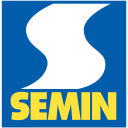 Caroline Semin recycle les bouteilles PET dans le bâtiment - 03/03/2024
Caroline Semin recycle les bouteilles PET dans le bâtiment - 03/03/2024
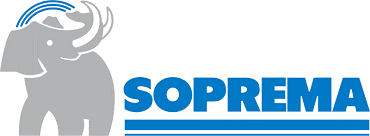 Près de Mulhouse, Soprema investit 50 millions d’euros dans une usine de panneaux isolants - 01/03/2024
Près de Mulhouse, Soprema investit 50 millions d’euros dans une usine de panneaux isolants - 01/03/2024
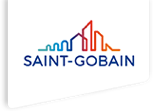 Saint-Gobain prêt à s'installer en Australie pour 2,5 milliards d'euros - 22/02/2024
Saint-Gobain prêt à s'installer en Australie pour 2,5 milliards d'euros - 22/02/2024
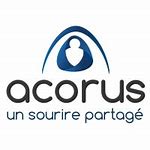 Temps libre, perte de salaire, productivité : semaine de quatre jours chez Acorus - 26/12/2023
Temps libre, perte de salaire, productivité : semaine de quatre jours chez Acorus - 26/12/2023
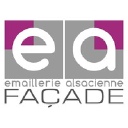 Emaillerie Alsacienne réduit le bilan carbone des panneaux de façade - 17/11/2023
Emaillerie Alsacienne réduit le bilan carbone des panneaux de façade - 17/11/2023
